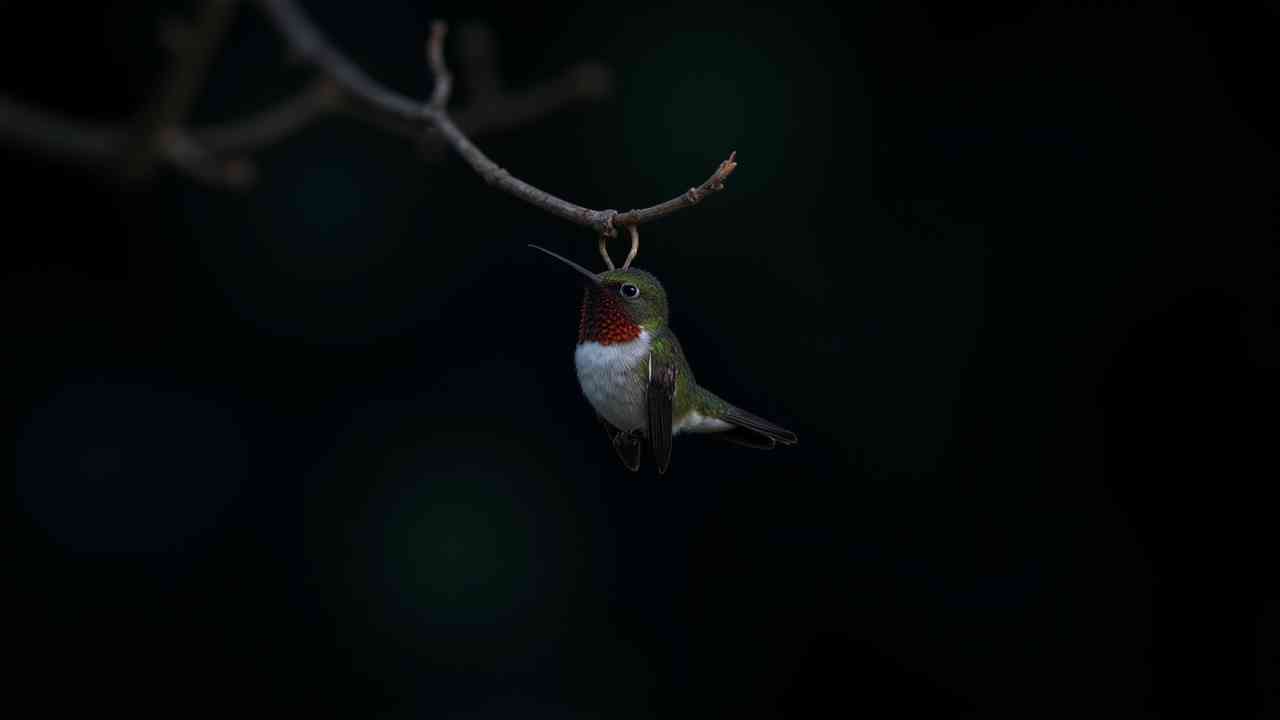
😴 Where Do Hummingbirds Sleep? A Guide to Their Secret Nightlife
😴 The Secret Nightlife of Hummingbirds: Where Do They Sleep? 😴
Hummingbirds are creatures of incredible energy. During the day, they are a blur of motion, with wings beating so fast they are nearly invisible. But what happens when these tiny, hyperactive birds need to rest? Where do hummingbirds sleep, and how do they survive the night without constant food?
The answer is a fascinating and extreme survival strategy. A hummingbird's sleep is unlike that of almost any other bird. They do not just nod off; they enter a deep, hibernation-like state to conserve their precious energy. This guide will explore the incredible world of a sleeping hummingbird. ✅
🤔 First, What Is a Hummingbird's Sleep State Called?
The key to understanding a hummingbird's sleep is the word torpor. A hummingbird's metabolism is the fastest in the animal kingdom. To survive the night without eating, they must dramatically slow everything down. Torpor is a state of decreased physiological activity, like a short-term hibernation that happens every night.
During torpor, a hummingbird's body undergoes incredible changes:
- Their heart rate, which can exceed 1,200 beats per minute when flying, can drop to as low as 50 beats per minute.
- Their body temperature can plummet by more than 50%, dropping close to the ambient air temperature.
This allows them to conserve up to 60% of their energy, which is just enough to survive until their first meal at dawn.
- What Does Their Sleeping Position Look Like?
This is the part that often alarms people who are lucky enough to find a sleeping hummingbird. As they enter deep torpor, they often tip over and hang upside down. To an observer, they can look like they are dead. This is a normal part of the process. They perch on a small twig, their feet lock on, and they enter this deep state of suspended animation.
- Where Do They Choose to Sleep?
Hummingbirds are very vulnerable at night, especially when in torpor. They are slow to wake and cannot fly away quickly. For this reason, they choose their sleeping spots very carefully. They look for a location that provides safety and shelter.
They will typically choose a sheltered branch deep inside a dense bush or a tree. This helps to protect them from the elements, like wind and rain. It also helps to hide them from nocturnal predators, such as owls or cats. They are solitary sleepers and do not roost together in flocks.
- How Do They Wake Up?
Waking up from torpor is a slow and energy-intensive process. It can take anywhere from 20 minutes to an hour. The hummingbird must use a great deal of energy to shiver and vibrate its muscles to bring its body temperature back up to normal.
As soon as they are awake, their first and only priority is to find food. They need an immediate, high-energy meal of nectar to replenish the energy they used just to wake up. This is why having early-blooming flowers or a well-stocked feeder is so important for their survival. 🌺